Comprehensive Analysis of Passivation Treatment Techniques


Intro
Passivation treatment is an essential process that enhances the corrosion resistance of metals. It is used in various applications across numerous industries, from aerospace to manufacturing. Understanding the process of passivation involves examining the mechanisms, methods, and implications of this treatment. This article aims to provide a comprehensive overview of passivation and its relevance in today’s material science context.
Research Overview
Methodological Approaches
Researchers study passivation through a blend of experimental and theoretical approaches. Laboratory experiments often involve the application of different chemical solutions to metal surfaces. Common methods include:
- Chemical passivation: Involves treating metal with passive layers using acids or alkaline solutions.
- Electrochemical methods: Utilize electric current to create a protective film on the surface of the metal.
- Corrosion testing: This evaluates the effectiveness of passivation by measuring the corrosion rate of treated versus untreated samples.
Furthermore, advanced microscopy techniques and spectroscopy are employed to analyze the structure and composition of the passivated layers.
Significance and Implications
Passivation treatment plays a crucial role in extending the life of metal components. Its significance can be summarized as follows:
- Durability: Improves the performance of materials under corrosive conditions.
- Cost Efficiency: Reduces the costs associated with maintenance and replacement of corroded materials.
- Environmental Impact: Passivation methods can be optimized to lower environmental footprint by reducing harmful waste in industrial applications.
"Understanding the intricacies of passivation can lead to innovative improvements in material performance and sustainability."
Current Trends in Science
Innovative Techniques and Tools
Recent advancements in technology have led to the development of more efficient passivation processes. Some of these innovations include:
- Nanotechnology: The application of nanoparticles enhances the protective qualities of passivation layers.
- Automation: Automated systems streamline the treatment process, enhancing consistency and reducing labor costs.
- Green Chemistry: New environmentally friendly chemicals are being adopted in passivation treatments, minimizing adverse effects on health and the environment.
Interdisciplinary Connections
The study of passivation is not limited to traditional materials science. It intersects with:
- Chemistry: Understanding chemical interactions is crucial for developing more effective passivation treatments.
- Engineering: Engineers apply the principles of passivation in designing components that can withstand harsh environments.
- Environmental Science: Addressing the environmental impact of passivation processes and materials contributes to a sustainable future.
As industries continue to demand higher performance and durability, the exploration of passivation treatment remains an important area of focus in both research and application.
Preface to Passivation Treatment
Passivation treatment is an essential process that plays a critical role in various industries. Its primary function is to enhance the corrosion resistance of metals and other materials. Understanding this treatment is crucial for professionals in materials science and engineering.
Definition of Passivation
Passivation can be defined as the process of making a material "passive" through a chemical reaction. This method often results in the formation of a protective oxide layer on the surface of the metal. This protective layer serves to inhibit further oxidation and corrosive damage, which can be detrimental over time. Common materials involved in passivation include stainless steel, aluminum, and titanium. The type of chemicals used can vary, but they generally create an oxide layer that is highly resistant to corrosion.
Importance of Passivation in Engineering
The significance of passivation in engineering cannot be overstated. First, it improves the durability of materials, extending their lifespan and reducing the need for frequent replacements. This is particularly relevant in industries such as aerospace, medical devices, and electronics, where reliability is paramount.
Moreover, passivation treatments can reduce maintenance costs over time. By minimizing the risk of corrosion-related failures, companies can save on potential downtime and repair expenses. Furthermore, it enhances safety standards by preventing sudden failures of structural materials.
In terms of environmental considerations, passivation treatment can minimize the environmental impact linked to corrosion. By preserving metal integrity, less waste is generated, and the overall ecological footprint of manufacturing processes can be reduced.
Overall, passivation treatment is a proactive approach that engineers should not overlook. Its ability to enhance material properties and reduce long-term costs makes it a fundamental process in material science.
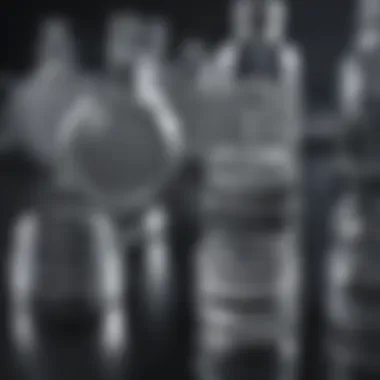
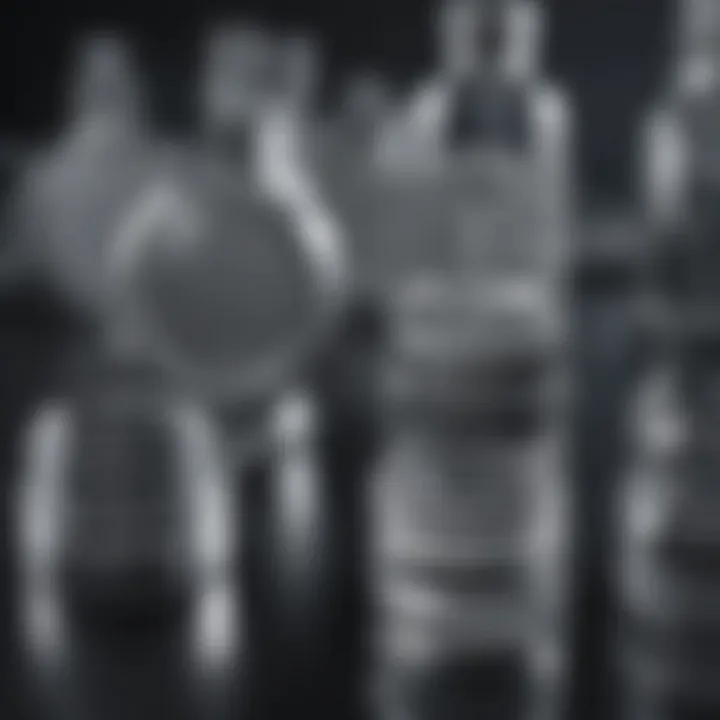
Chemical Principles of Passivation
The subject of chemical principles in passivation is vital to understanding how this treatment enhances material durability and performance. Passivation hinges on fundamental chemical reactions that dictate how metals interact with their environment. Knowing these principles allows engineers and scientists to make informed decisions regarding the selection and implementation of passivation methods.
Understanding chemical principles helps to reveal why certain metals corrode more readily than others and how passivation mitigates this risk. When we explore these principles, we see that oxidation and reduction reactions play a core role. This leads us to a deeper comprehension of how passive films form and influence the performance of treated materials.
Oxidation and Reduction Reactions
Oxidation and reduction reactions are foundational to passivation treatment. When a metal surface is exposed to an oxidizing environment, an oxidation reaction occurs. This reaction allows metal ions to lose electrons, resulting in corrosion. Conversely, a reduction reaction is when a suitable material or chemical provides electrons back to the metal, thus preventing corrosion from progressing.
The strength of a passive film is often contingent upon the balance between these reactions. For example, in stainless steel, chromium oxidizes to form Cr2O3, a tough passive layer. This layer protects the underlying metal from further oxidation. The interplay of these reactions not only defines the passivation effectiveness but also influences longevity in application environments.
Key Points on Oxidation and Reduction:
- Oxidation involves electron loss by the metal.
- Reduction involves gain of electrons, counteracting the effects of oxidation.
- Passive films form due to stable oxides created during these reactions.
Understanding these interactions is essential to optimizing passivation processes in various applications.
Formation of Passive Films
Passive films are crucial in enhancing the durability of metals. These films are thin, protective layers that form on the surface of metals in the presence of oxidizing agents. The formation process involves several steps. First, an anodic reaction occurs, leading to the gradual creation of an oxide layer. This can include oxides of elements like chromium, aluminum or titanium.
As the film develops, it becomes dense and adherent to the substrate, contributing to improved corrosion resistance. The quality and thickness of this passive layer significantly affect the performance of the metal. A thicker and more stable passive film usually means better protection against corrosive factors.
A well-formed passive film can increase the lifespan of materials significantly, especially in aggressive environments.
Considerations in Film Formation:
- The type of metal greatly influences the characteristics of the passive film.
- Environmental factors like pH, temperature, and presence of aggressive agents can alter film quality.
- Regular maintenance and inspection are vital for ensuring the integrity of the passive films over time.
Types of Passivation Treatments
Understanding the different types of passivation treatments is crucial for engineers and researchers seeking to enhance the durability and performance of materials. Each method offers unique benefits that can be leveraged depending on specific application needs. Moreover, considerations such as cost, environmental impact, and the particular nature of materials involved play essential roles in the selection process. This section will elaborate on three primary types of passivation treatments: Chemical Passivation, Electrochemical Passivation, and Thermal Passivation.
Chemical Passivation
Chemical passivation utilizes chemicals to enhance the oxide layer on the surface of metals, thus improving resistance to corrosion. Common chemicals used include nitric acid, phosphoric acid, and citric acid. Chemical passivation is particularly favored for stainless steel, where it creates a protective layer that inhibits oxidation.
- Process: The metal is typically cleaned to remove contaminants. It is then immersed in a solution that promotes the formation of a stable oxide layer on the surface.
- Benefits: This method can be relatively easy to implement, requiring fewer complex systems or specialized equipment. It also usually ensures uniform coverage on the surface of the metal, an essential factor in achieving adequate protection against corrosion.
- Considerations: However, the choice of chemical must be suitable for the specific alloy being treated. Also, some chemicals can be hazardous, requiring strict safety protocols during handling and disposal.
Electrochemical Passivation
Electrochemical passivation, or electrochemical treatment, is a more sophisticated method involving the application of an electrical current in a solution to improve the oxide film on the surface. This method also finds prominence in treating stainless steel as well as other alloys.
- Process: The metal is placed in an electrolyte bath, and electrical current is applied. This process facilitates the formation of a thicker and potentially more protective oxide layer.
- Benefits: One of the primary advantages of this method is the precise control it offers over the thickness and quality of the passive layer. It can lead to increased corrosion resistance under harsh environments.
- Considerations: Although effective, electrochemical passivation requires more complex equipment and a higher initial investment compared to chemical methods. Additionally, ensuring uniform application can present challenges, especially with intricate geometries.
Thermal Passivation
Thermal passivation employs heat to improve the oxide layer’s quality on various metals. This method primarily helps to refine the microstructure, enhancing overall properties.
- Process: The metal component is heated to a certain temperature in an environment like an inert gas or vacuum. This heating allows for the reorganization of surface atoms, promoting the growth of a thicker and more stable oxide layer.
- Benefits: Thermal passivation can significantly enhance the protective qualities of the oxide layer while improving the overall integrity of the material. It is highly effective for metals exposed to high temperatures or aggressive environments.
- Considerations: The process demands precise temperature control and monitoring, as overheating can damage the material. Also, the overall economic implications are a factor, as it may involve higher energy costs.
"The choice of passivation treatment profoundly impacts the lifecycle of materials across various industries. Each method presents unique attributes, making them suitable for different applications and environments."
Applications of Passivation Treatment
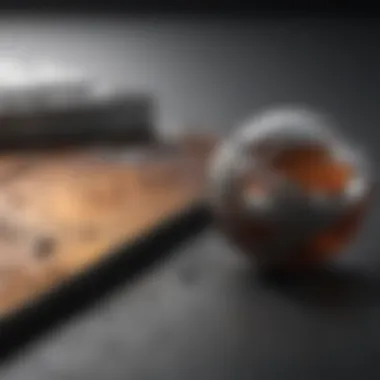
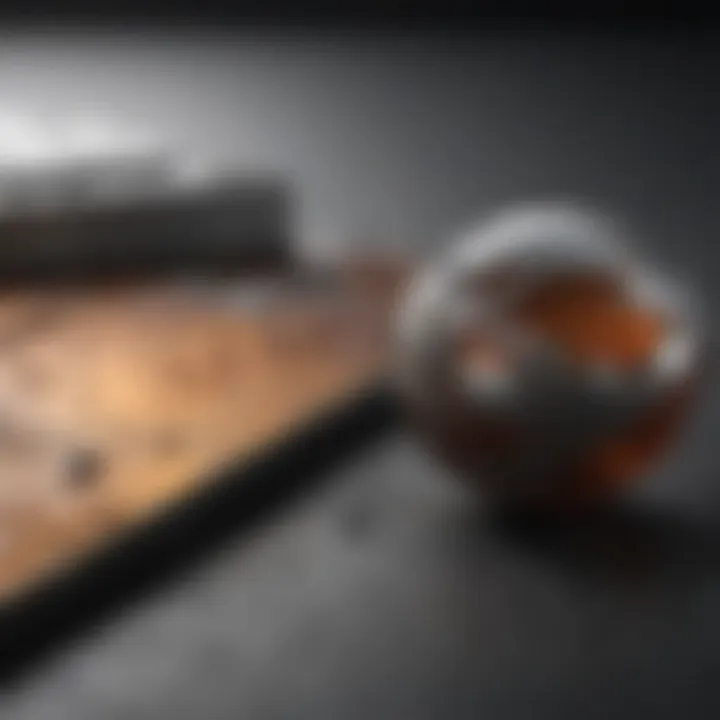
Passivation treatment serves an indispensable role in multiple industries, primarily due to its ability to enhance the durability and lifespan of materials. The applications of passivation underscore its significance in engineering, where corrosion resistance is paramount. By forming a protective oxide layer on metals, passivation minimizes degradation, thus preserving the mechanical integrity of components. This is particularly crucial in environments where materials are exposed to corrosive elements. Each industry leverages passivation techniques uniquely, catering to specific operational requirements and challenges. Below, we discuss the applications in three key fields:
Aerospace Industry
In the aerospace sector, materials are exposed to extreme conditions, including high-stress environments, temperature variations, and corrosive atmospheres. Passivation treatment becomes essential for components such as airframe structures, engine housings, and fasteners. The treatment significantly improves fatigue resistance and overall durability, which are critical for safety and performance in flights. Chemical passivation methods, such as chromic acid and nitric acid treatments, are frequently used to enhance the properties of stainless steels and titanium alloys.
- Benefits:
- Enhanced resistance to corrosion from salt and moisture.
- Improved longevity of critical parts, reducing the frequency of repairs.
- Compliance with stringent safety regulations.
Medical Devices
The medical device industry also benefits greatly from passivation treatments. Materials used in devices such as surgical instruments, implants, and catheters must meet high standards of biocompatibility and cleanliness. Passivation helps prevent metallic ions from leaching, which could lead to adverse biological reactions. Furthermore, it enhances resistance to sterilization processes, such as autoclaving and ethylene oxide treatment, ensuring the devices remain safe and effective for use in patients.
- Considerations:
- Choice of passivation method impacts the effectiveness of sterilization techniques.
- Regulatory compliance, such as ISO 13485, must be observed to ensure products meet industry standards.
Electronics Manufacturing
In electronics manufacturing, passivation is critical for protecting components from environmental factors that may cause oxidation or failure. Here, materials like printed circuit boards (PCBs) and connectors undergo treatments that safeguard them against corrosion, extending their life cycle and reliability. Techniques like silicon dioxide layers or polymer coatings can provide excellent electrical insulation while maintaining mechanical integrity.
- Advantages:
- Improved conductivity due to reduced surface oxides.
- Enhanced reliability in various electronic applications, such as consumer electronics and aerospace systems.
In summary, the applications of passivation treatment are diverse and impactful. As industries continue to evolve, the role of passivation in promoting durability and reliability will only grow more vital.
Factors Influencing Passivation Effectiveness
The effectiveness of passivation treatments greatly depends on several key factors. Understanding these factors can help in optimizing the passivation process, ensuring that it yields the desired improvement in corrosion resistance for various materials. This part of the article focuses on two primary elements: the composition of the material being treated and the techniques used in surface preparation. These aspects not only affect the outcome of the passivation process but are also essential for integrating new methods and innovations in the field.
Material Composition
The composition of the material significantly influences its susceptibility to corrosion and, consequently, the efficacy of the passivation treatment applied. For example, alloys with higher amounts of chromium, such as stainless steel, tend to form a robust passive layer more effectively. This layer is crucial in protecting the underlying metal from environmental degradation.
Factors to consider in material composition include:
- Alloying Elements: Different metals and their combinations can react distinctly during passivation. Elements such as nickel and molybdenum enhance the protective layer.
- Base Metal Properties: Pure metals may respond differently compared to alloys. For example, titanium creates a very stable oxide layer, while aluminum requires specific conditions to form a protective oxide.
Successful passivation treatments depend on recognizing the specific characteristics of the materials used. Researchers and practitioners must analyze the composition before selection of the appropriate passivation method to ensure optimal outcomes in corrosion resistance.
Surface Preparation Techniques
Surface preparation is crucial in determining the overall effectiveness of the passivation treatment. Proper surface preparation removes contaminants like oils, oxides, and particulate matter. Inadequate preparation can lead to poor adhesion of the passive layer and ultimately inadequate protection against corrosion.
Key aspects of surface preparation include:
- Cleaning: Techniques such as ultrasonic cleaning, solvent washing, and abrasive blasting can be employed to effectively clean the surface.
- Roughness and Profile: The surface texture also plays a significant role. A uniformly rough surface often promotes better adhesion of the passive layer than a smooth surface.
- Chemical Treatments: Utilizing chemical solutions can aid in removing any remaining contaminants and activating the surface for improved passivation.
Environmental Impact of Passivation Treatments
Understanding the environmental impact of passivation treatments is crucial for any industry implementing these processes. The nature of passivation treatments leads to a variety of implications for both the environment and sustainability efforts. Proper management of chemical waste is a necessity, as improper disposal could result in pollution and adverse effects on ecosystems. Furthermore, sustainable practices in passivation can promote a healthier interaction between industrial operations and the natural world.
Chemical Waste Management
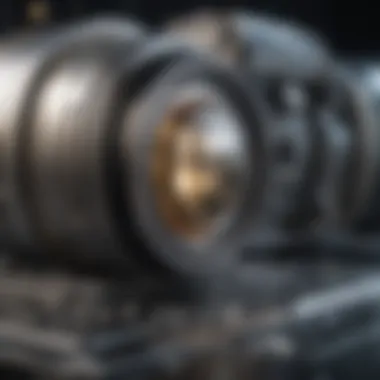

Effective chemical waste management is a critical component of any passivation treatment process. The chemicals used during passivation can generate hazardous byproducts, making proper disposal essential. When handling substances like nitric acid or phosphoric acid, industries must adhere to specific regulations to reduce environmental risks.
- Identify toxic waste: Companies should be able to identify and classify chemicals used in passivation that are harmful to the environment.
- Contain and treat waste: Utilize containment methods to prevent spills and leaks, ensuring waste undergoes treatment before disposal.
- Adopt recycling practices: Whenever possible, recycling waste materials can significantly diminish the volume of hazardous waste.
Clear guidelines often derive from agencies like the Environmental Protection Agency (EPA). Following such guidelines minimizes the potential health hazards while optimizing the operational efficiency of passivation processes.
Sustainability Considerations
Sustainability is becoming increasingly central to industrial operations, including passivation treatments. While enhancing the durability of materials, it is equally valuable to explore ways to make the processes eco-friendlier.
- Utilization of eco-friendly chemicals: Transitioning to less harmful chemicals can reduce environmental strain while maintaining passivation effectiveness.
- Energy-efficient processes: Implementing energy-efficient practices within passivation can lead to reduced carbon footprints and decreased operational costs.
- Lifecycle assessments: Performing lifecycle analyses on metals treated through passivation can aid in understanding and mitigating environmental impacts.
"Sustainable practices not only protect the environment but can also enhance a company's reputation."
Through proactive measures, companies involved in passivation can contribute to both environmental preservation and operational excellence. Keeping abreast of innovations in treatment techniques will allow industries to adapt their approaches, ensuring that passivation practices evolve alongside environmental considerations.
Implementing these principles can lead to improved material properties while also fostering a sense of responsibility toward the environment. The interconnections between passivation treatments and environmental impact highlight the importance of a balanced approach in the ongoing push towards sustainability.
Future Trends in Passivation Technology
The ongoing evolution of passivation technology holds significant relevance in the modern industrial landscape. Enhanced corrosion resistance of materials is more important now than ever, especially in sectors like aerospace and electronics. With the rapid pace of technological advancements, it is essential to understand how future trends may influence passivation treatments. The focus is not only on improving existing techniques but also developing sustainable and innovative solutions to meet the growing demand for environmentally friendly processes.
Advancements in Materials Science
Materials science plays a crucial role in advancing passivation technologies. Researchers are exploring new alloys and surface treatments that enhance chemical resistance. The development of nanostructured materials is gaining attention. These materials exhibit unique properties, such as increased strength and lower susceptibility to corrosion.
Some promising areas include:
- Smart alloys that change their properties in response to environmental stimuli, offering higher durability.
- Biocompatible materials for medical devices that require passivation to prevent corrosion when in contact with body fluids.
- Sustainable materials sourced from renewable resources, reducing dependence on traditional alloys.
The ability to precisely engineer materials at the microscopic level enables significant improvements in the effectiveness of passivation treatments.
Innovative Passivation Techniques
The last decade has seen a surge in innovative passivation techniques aimed at improving efficiency while reducing environmental impact. Techniques such as:
- Electrochemical passivation using advanced electrolytes allows for better control over the formation of passive films.
- Plasma-based treatments provide uniform passivation even in complex geometries, ensuring maximum coverage.
- Biologically inspired passivation methods exploit natural processes to enhance corrosion protection.
These advancements not only increase the effectiveness of passivation treatments but also minimize the harmful effects associated with traditional chemical processes. For example, the introduction of less toxic materials into the passivation process can significantly reduce waste and improve safety across various applications.
"As materials science progresses, the synergy between innovative techniques and sustainable practices paves the way for the future of passivation treatment."
In summary, understanding future trends in passivation technology allows industry professionals to prepare for shifts in material performance and environmental policy compliance. Staying informed about these trends will help organizations maintain their competitive edge while contributing positively to environmental preservation.
Ending
In the context of passivation treatment, the conclusion serves as an essential summation of the previously discussed topics. It provides a final look at the importance and utility of this process in various applications. Passivation is not merely a superficial treatment; it is a foundational practice that significantly enhances the durability and longevity of materials used in demanding environments.
Firstly, understanding the mechanisms of passivation allows for optimization of treatment processes across industries. By enhancing corrosion resistance, passivation treatment protects materials against degradation, thereby prolonging their lifespan. This has profound implications not only on costs related to maintenance and replacements but also on overall safety, especially in critical fields such as aerospace and medical devices.
The article has highlighted different types of passivation methods including chemical, electrochemical, and thermal passivation. Each method has distinct advantages and applications, which can be chosen based on specific material requirements. This versatility showcases the relevance of passivation treatment in modern material science.
Furthermore, the discussion on the environmental impact of passivation treatments emphasizes the need for responsible practices. Manufacturers are increasingly focused on sustainability considerations and waste management practices, ensuring that advancements do not come at the expense of the environment.
Emerging trends in passivation technology, as addressed in this article, present exciting possibilities for future development. Innovations in materials science and treatment techniques hint at a continuously evolving landscape, where efficiency and effectiveness can be further improved.
By synthesizing the information presented throughout the article, it becomes clear that passivation treatment is a critical element in modern engineering. Its multifaceted applications and benefits warrant ongoing study and adaptation.
Ultimately, a thorough understanding of passivation will empower professionals and researchers alike to make informed decisions, optimizing the performance and sustainability of materials in their respective fields.
"Passivation treatment is a pivotal process for enhancing material performance. Its importance expands beyond mere chemical processes to include significant economic and environmental considerations."



